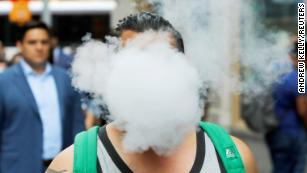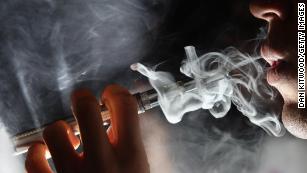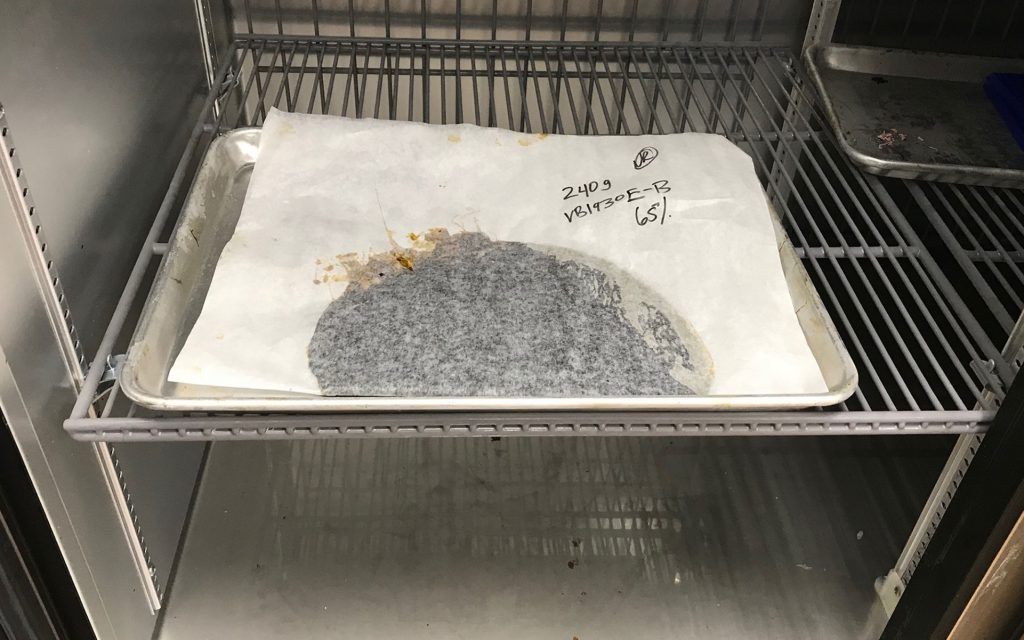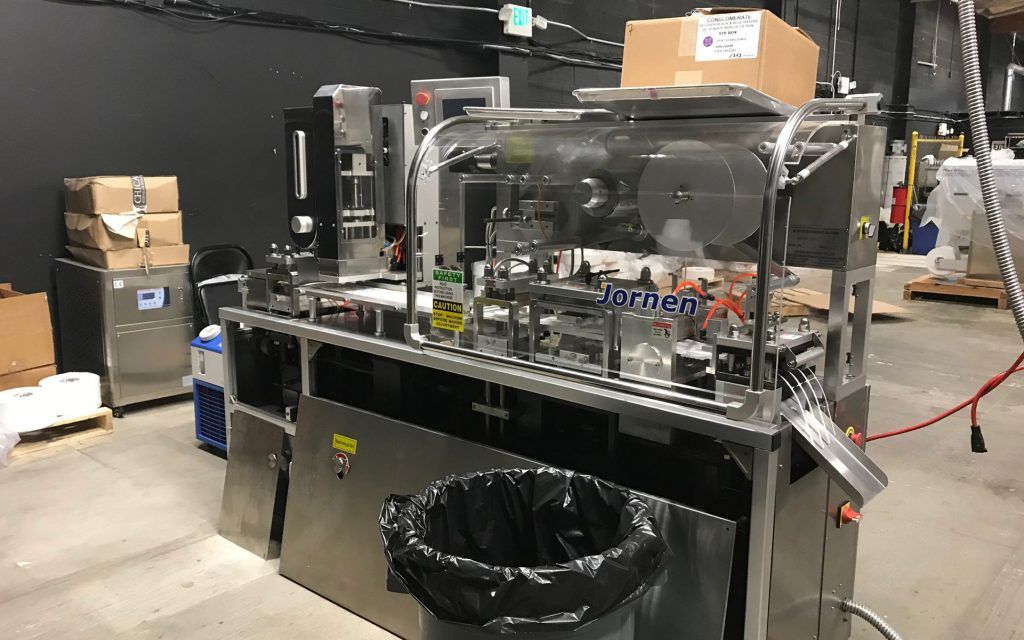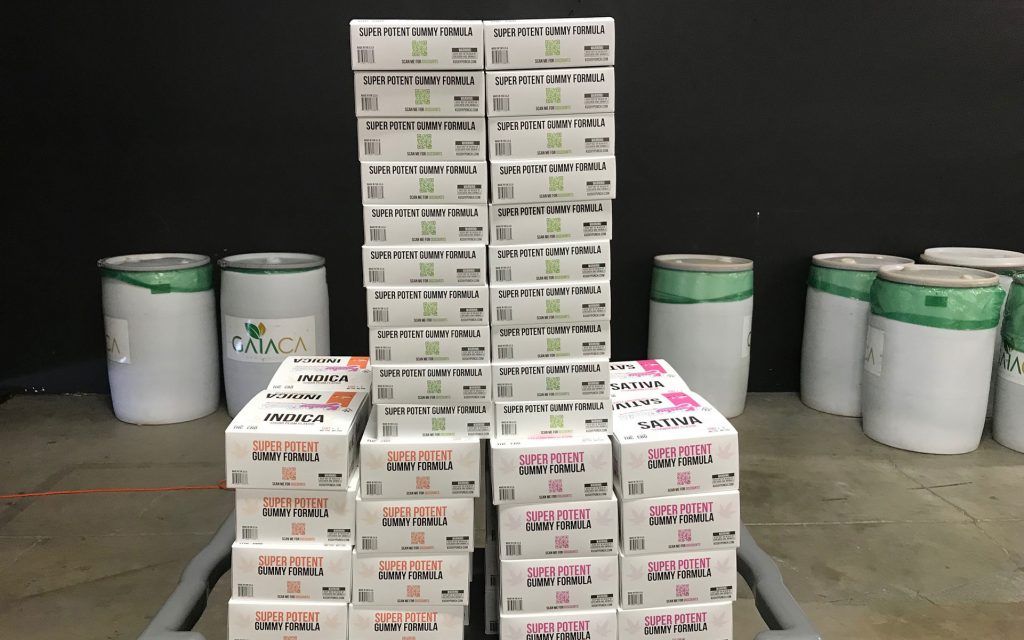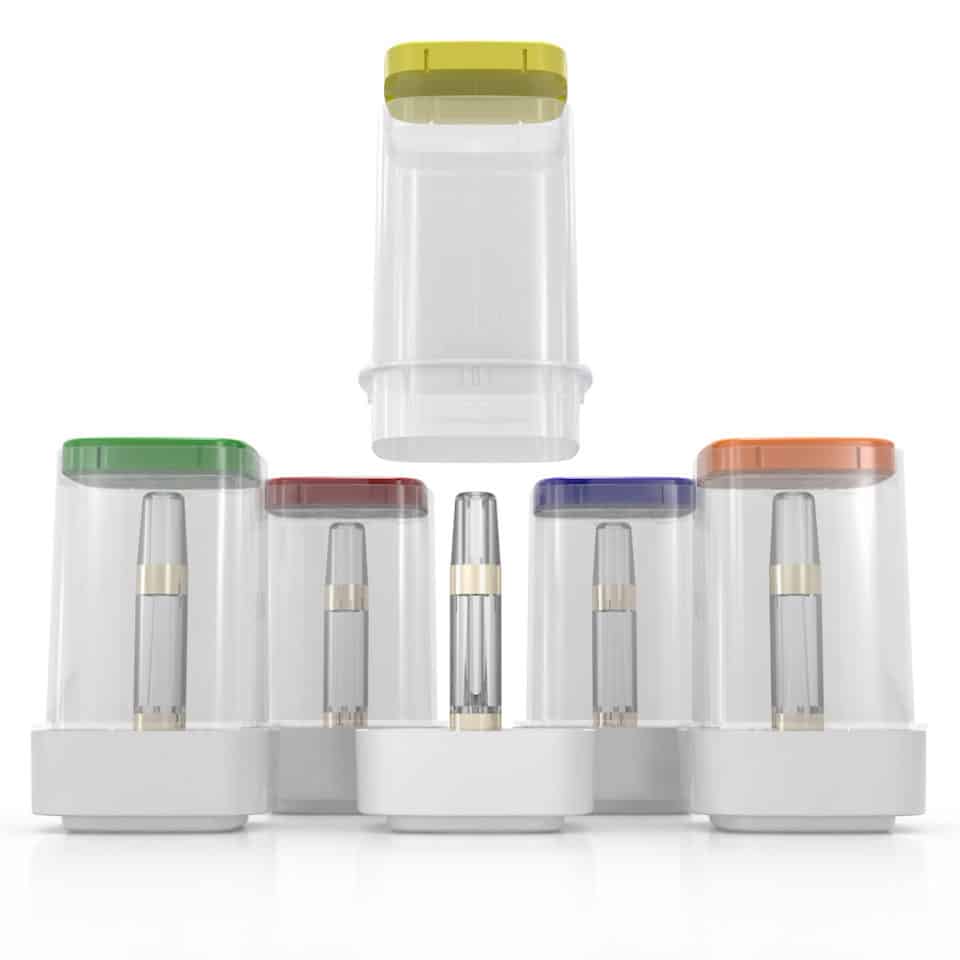Baron23
Well-Known Member
" “Instead of intervening to try to stem the distribution of illegal, black market THC vape cartridges that are filled with oil, policy makers are banning flavored e-cigarettes, which so far as we know, are not clearly associated with the outbreak."
Well, yes...of course they are. After all, the main characteristic needed for being a successful politician these days is the ability for constant knee jerk, thoughtless, knowl nothing reactions.
Just ask anybody who REALLY does need pharma pain meds these days.
Cannabis vaping — not nicotine — is primary cause of lung illness, CDC finally says
The Centers for Disease Control and Prevention finally acknowledged Friday that a vast majority of the mysterious, vaping-related lung illnesses are linked to cannabis products — not nicotine.
The outbreak has confused consumers, largely because politicians have placed most of the attention on vaping nicotine. On Sept. 4, Gov. Gretchen Whitmer was the first to announce a ban on flavored nicotine vaping, while remaining silent on tainted, black market cannabis oils that are vaped. Massachusetts and New York followed with their own bans on vaping.
On Friday, the CDC announced that the lung illness has shown no sign of abating, sickening 806 people in 46 states and killing 13. Of the patients who reported what product they vaped, only 16% said they only used nicotine. But health officials say that number is likely lower because people are reluctant to admit using cannabis.
In the past 10 days, the number of confirmed or probable cases in Michigan has nearly doubled to 20, and an additional 10 cases are under investigation, according to the state’s Department of Health and Human Services. In a majority of those cases, patients reported vaping cannabis oil, state health officials tell Metro Times.
Despite the early link to cannabis, Michigan and the CDC have been reluctant to point to THC and instead focused on nicotine, drawing criticism from many health experts. While other states have issued warnings, Michigan has been largely silent.
“This confusion is leading to bad public policy,” Dr. Michael Siegel, a professor of community health services at Boston University, told Metro Times last week. “Instead of intervening to try to stem the distribution of illegal, black market THC vape cartridges that are filled with oil, policy makers are banning flavored e-cigarettes, which so far as we know, are not clearly associated with the outbreak. Banning these products is going to cause many ex-smokers to return to smoking and is also going to create a new black market for flavored e-liquids. Worst of all, it is going to lead many youth to switch from vaping flavored e-liquids to vaping marijuana, making the outbreak much worse than it already is.”
A recent Morning Consult poll underscores the confusion surrounding the lung illness. Of those surveyed, 58 percent of Americans said they believed nicotine was to blame, while only 34 percent thought cannabis was responsible.
A small portion of the market two years ago, cannabis vape cartridges now represent about a third of the market, according to New Frontier Data, an economic analysis firm that tracks the legal cannabis industry. The cartridges are popular because they’re discreet, inexpensive, easy to use, and won’t stink up a room.
As many as 50 million cannabis cartridges are tainted with lead, pesticides, vitamin E acetate, or residual solvent butane, according to Leafly, a website dedicated to marijuana.
In another report released Friday, health officials found that two-thirds of the 86 patients interviewed in Illinois and Wisconsin said they purchased their cannabis cartridges from the black market before they got sick. Most of the illicit cartridges were sold under the name “Dank Vapes,” a counterfeit brand also found in Michigan and New York cases. Other brands included Off White, TKO, and Moon Rocks.
“Dank Vapes appears to be the most prominent in a class of largely counterfeit brands, with common packaging that is easily available online and that is used by distributors to market THC-containing cartridges with no obvious centralized production or distribution,” the report states.
click to enlarge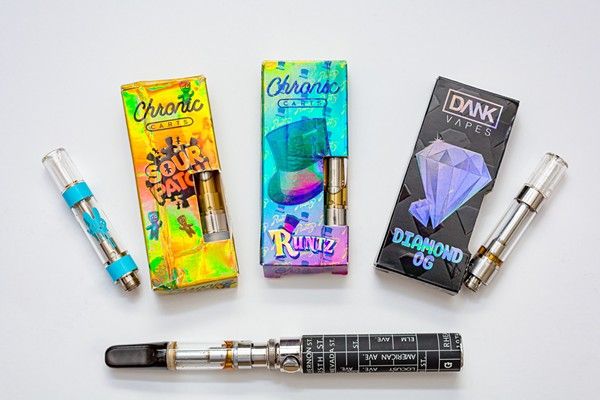
The CDC has not identified a single product or substance that is causing the lung illness, but health experts are increasingly focusing on vitamin E acetate, a thickener used to dilute cannabis cartridges in the black market. Introduced to the market late last year, vitamin E has become a popular and relatively inexpensive way for illicit drug dealers to maximize profits by adding the compound to cannabis oil, which is much more expensive. Vitamin E acetate and cannabis oil look very similar, so it’s hard for consumers to detect the cutting agent.
Investigators at the Food and Drug Administration found vitamin E acetate in samples collected from patients across the country. The same compound was found in nearly all cannabis samples from New York patients who have fallen ill in recent weeks, according to that state's health department. Most of the samples tested by the CDC found vitamin E acetate.
News of the lung illness has dampened sales of cartridges on the legal market. In the first week of September, sales declined 15 percent nationwide. In Oregon, New Mexico, Massachusetts, Nevada, and Montana, sales dropped by more than a third in each state.
It’s unclear whether sales in Michigan’s state-sanctioned dispensaries are declining because the state’s Marijuana Regulatory Agency (MRA) has declined to provide that information. Metro Times has filed a Freedom of Information Act request for records that show how robust the sale of cannabis cartridges are.
To assuage fears, some dispensaries in other states are beginning to require manufacturers to provide a list of their ingredients. And some state-sanctioned labs are voluntarily testing for vitamin E acetate.
In Michigan, all marijuana products sold at licensed provisioning centers must be tested for pesticides, toxic metals, bacteria, and residual solvents from extraction methods. But like other states with a regulated marijuana industry, the MRA does not require testing for vitamin E acetate, nor does it require vape cartridge manufacturers to divulge the ingredients.
In Oregon and New York, dispensaries are now required to post warnings about the potential hazards of vape cartridges. In Massachusetts, cartridge manufacturers will soon have to list the ingredients used in their products.
The Oregon Liquor Control Commission also encouraged dispensaries to remove any potentially problematic cartridges from their shelves, and offer returns on previously sold vaping products.
Massachusetts banned both nicotine and cannabis vaping products, and California is urging people not to buy vape cartridges.
Well, yes...of course they are. After all, the main characteristic needed for being a successful politician these days is the ability for constant knee jerk, thoughtless, knowl nothing reactions.
Just ask anybody who REALLY does need pharma pain meds these days.
Cannabis vaping — not nicotine — is primary cause of lung illness, CDC finally says
The Centers for Disease Control and Prevention finally acknowledged Friday that a vast majority of the mysterious, vaping-related lung illnesses are linked to cannabis products — not nicotine.
The outbreak has confused consumers, largely because politicians have placed most of the attention on vaping nicotine. On Sept. 4, Gov. Gretchen Whitmer was the first to announce a ban on flavored nicotine vaping, while remaining silent on tainted, black market cannabis oils that are vaped. Massachusetts and New York followed with their own bans on vaping.
On Friday, the CDC announced that the lung illness has shown no sign of abating, sickening 806 people in 46 states and killing 13. Of the patients who reported what product they vaped, only 16% said they only used nicotine. But health officials say that number is likely lower because people are reluctant to admit using cannabis.
In the past 10 days, the number of confirmed or probable cases in Michigan has nearly doubled to 20, and an additional 10 cases are under investigation, according to the state’s Department of Health and Human Services. In a majority of those cases, patients reported vaping cannabis oil, state health officials tell Metro Times.
Despite the early link to cannabis, Michigan and the CDC have been reluctant to point to THC and instead focused on nicotine, drawing criticism from many health experts. While other states have issued warnings, Michigan has been largely silent.
“This confusion is leading to bad public policy,” Dr. Michael Siegel, a professor of community health services at Boston University, told Metro Times last week. “Instead of intervening to try to stem the distribution of illegal, black market THC vape cartridges that are filled with oil, policy makers are banning flavored e-cigarettes, which so far as we know, are not clearly associated with the outbreak. Banning these products is going to cause many ex-smokers to return to smoking and is also going to create a new black market for flavored e-liquids. Worst of all, it is going to lead many youth to switch from vaping flavored e-liquids to vaping marijuana, making the outbreak much worse than it already is.”
A recent Morning Consult poll underscores the confusion surrounding the lung illness. Of those surveyed, 58 percent of Americans said they believed nicotine was to blame, while only 34 percent thought cannabis was responsible.
A small portion of the market two years ago, cannabis vape cartridges now represent about a third of the market, according to New Frontier Data, an economic analysis firm that tracks the legal cannabis industry. The cartridges are popular because they’re discreet, inexpensive, easy to use, and won’t stink up a room.
As many as 50 million cannabis cartridges are tainted with lead, pesticides, vitamin E acetate, or residual solvent butane, according to Leafly, a website dedicated to marijuana.
In another report released Friday, health officials found that two-thirds of the 86 patients interviewed in Illinois and Wisconsin said they purchased their cannabis cartridges from the black market before they got sick. Most of the illicit cartridges were sold under the name “Dank Vapes,” a counterfeit brand also found in Michigan and New York cases. Other brands included Off White, TKO, and Moon Rocks.
“Dank Vapes appears to be the most prominent in a class of largely counterfeit brands, with common packaging that is easily available online and that is used by distributors to market THC-containing cartridges with no obvious centralized production or distribution,” the report states.
click to enlarge

- New York Department of Health
- Vape cartridges that were used by New Yorkers who got sick. All were found to have been cut with vitamin E acetate.
The CDC has not identified a single product or substance that is causing the lung illness, but health experts are increasingly focusing on vitamin E acetate, a thickener used to dilute cannabis cartridges in the black market. Introduced to the market late last year, vitamin E has become a popular and relatively inexpensive way for illicit drug dealers to maximize profits by adding the compound to cannabis oil, which is much more expensive. Vitamin E acetate and cannabis oil look very similar, so it’s hard for consumers to detect the cutting agent.
Investigators at the Food and Drug Administration found vitamin E acetate in samples collected from patients across the country. The same compound was found in nearly all cannabis samples from New York patients who have fallen ill in recent weeks, according to that state's health department. Most of the samples tested by the CDC found vitamin E acetate.
News of the lung illness has dampened sales of cartridges on the legal market. In the first week of September, sales declined 15 percent nationwide. In Oregon, New Mexico, Massachusetts, Nevada, and Montana, sales dropped by more than a third in each state.
It’s unclear whether sales in Michigan’s state-sanctioned dispensaries are declining because the state’s Marijuana Regulatory Agency (MRA) has declined to provide that information. Metro Times has filed a Freedom of Information Act request for records that show how robust the sale of cannabis cartridges are.
To assuage fears, some dispensaries in other states are beginning to require manufacturers to provide a list of their ingredients. And some state-sanctioned labs are voluntarily testing for vitamin E acetate.
In Michigan, all marijuana products sold at licensed provisioning centers must be tested for pesticides, toxic metals, bacteria, and residual solvents from extraction methods. But like other states with a regulated marijuana industry, the MRA does not require testing for vitamin E acetate, nor does it require vape cartridge manufacturers to divulge the ingredients.
In Oregon and New York, dispensaries are now required to post warnings about the potential hazards of vape cartridges. In Massachusetts, cartridge manufacturers will soon have to list the ingredients used in their products.
The Oregon Liquor Control Commission also encouraged dispensaries to remove any potentially problematic cartridges from their shelves, and offer returns on previously sold vaping products.
Massachusetts banned both nicotine and cannabis vaping products, and California is urging people not to buy vape cartridges.
